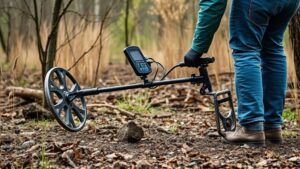Unearthing Native Relics Along Seasonal Wildlife Migration Paths
Unearthing Native Relics Along Seasonal Wildlife Migration Paths
The intersection of archaeological research and wildlife studies presents a unique opportunity to understand the rich tapestry of human history and biodiversity. This article explores the significance of unearthing native relics along seasonal wildlife migration paths, highlighting the cultural, ecological, and archaeological implications of these findings.
The Importance of Migration Paths
Seasonal wildlife migration paths serve as essential corridors for animals traversing vast landscapes in search of food, shelter, and breeding grounds. These migratory routes not only support the ecological health of various species but also serve as historical conduits for human activity. Research indicates that many indigenous cultures utilized these pathways, coexisting with and sometimes shaping the local ecosystems. For example, the North American bison migration routes influenced the lifestyle and settlement patterns of Native American tribes such as the Plains Indians.
Case Studies of Archaeological Discoveries
Numerous archaeological discoveries along migratory routes have revealed a wealth of information about early human societies. Notable case studies include:
- The Medicine Wheel in Wyoming: This sacred site, believed to have been constructed by Native American tribes, is positioned along significant animal migration corridors. Its alignment with celestial bodies indicates the importance of these pathways in cultural and religious practices.
- The Bison Kill Sites in Montana: Excavations at locations where prehistoric hunters ambushed bison have uncovered tools, weaponry, and remnants of communal living. These findings underscore the reliance on migratory species for sustenance and the intricate relationship between humans and nature.
Methods of Archaeological Survey
Archaeologists employ various methods to survey and excavate relics along migration paths. Common techniques include:
- Geophysical Surveys: Using technologies like ground-penetrating radar, researchers can identify subsurface anomalies that may indicate human activity without intrusive digging.
- Stratigraphic Excavation: This method involves carefully removing layers of soil to uncover artifacts in their chronological context, providing insights into the sequential use of a space by different cultures.
- Site Mapping: Researchers create detailed maps, marking the locations of finds, which helps in understanding the spatial relationships between artifacts and their environmental context.
Cultural Significance of Findings
The relics unearthed along seasonal wildlife migration paths contribute significantly to the understanding of indigenous cultures. e artifacts often include tools, pottery, and ceremonial objects that narrate the stories of social structure, trade, and spiritual beliefs among early populations. For example, the discovery of intricate stone tools indicates advanced craftsmanship and the transmission of knowledge through generations.
Plus, these findings serve as a reminder of the deep connection between human societies and the natural world. They illustrate how cultural practices were often designed to harmonize with the rhythms of nature, particularly in relation to migratory species. This harmonious relationship is crucial today as societies grapple with environmental changes and biodiversity loss.
Current Implications and Future Directions
As climate change alters migratory patterns, past findings offer valuable insights into how species and cultures adapt to shifting conditions. Researchers are increasingly integrating traditional ecological knowledge with modern scientific methods to predict future shifts in both wildlife and human activity. This approach emphasizes the need for interdisciplinary collaboration in archaeology, ecology, and anthropology.
Plus, protecting migration corridors becomes integral not only for the conservation of wildlife but also for preserving the historical narrative of indigenous peoples. Understanding the use of these paths allows modern societies to create informed conservation strategies that honor cultural heritage while safeguarding biodiversity.
Actionable Takeaways
For professionals and enthusiasts interested in the intersection of archaeology and ecology, consider the following actionable takeaways:
- Support initiatives that promote the preservation of migratory routes as vital ecological and cultural corridors.
- Participate in or promote community-based archaeological projects that aim to uncover and document local histories along these pathways.
- Advocate for educational programs that merge indigenous knowledge with modern conservation efforts to foster a deeper appreciation of cultural heritage and biodiversity.
In summary, unearthing native relics along seasonal wildlife migration paths offers a profound glimpse into our shared past and highlights the significance of maintaining a symbiotic relationship with the natural world. By studying these artifacts, we gain not only historical context but also insights that inform contemporary conservation and ecological practices.


